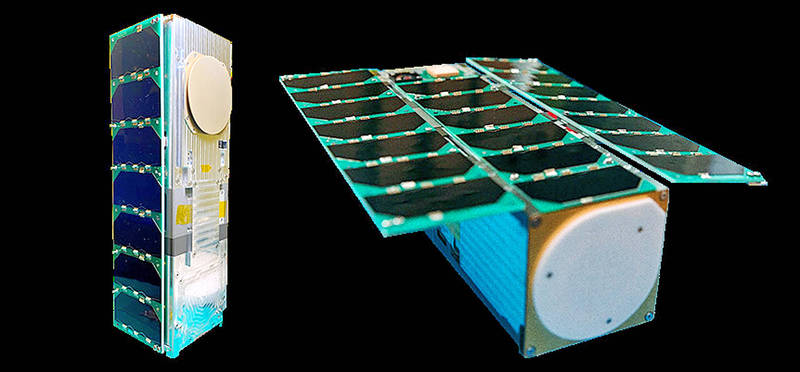《TAIPEI TIMES》 Ground stations yet to hear from new cubesats

The Ionospheric Dynamics Explorer and Attitude Subsystem Satellite is pictured from different angles in a combination image. Photo courtesy of the National Space Organization
By Lin Chia-nan / Staff reporter
The local research teams that developed two cubesats launched by a Space Exploration Technologies Corp’s (SpaceX) Falcon 9 rocket at 11pm on Sunday are dealing with signal reception problems at their ground stations.
The Transporter-1 mission launched 143 satellites — the most ever deployed on a single mission — from the Cape Canaveral Space Force Station in Florida, after being delayed three times due to technical problems or unfavorable weather.
Taiwan’s two cubesats are the YuSat, designed to monitor road and maritime traffic, and the Ionospheric Dynamics Explorer and Attitude Subsystem Satellite (IDEASSat), designed for ionospheric observation.
By noon yesterday, the two teams had not succeeded in communicating with the cubesats from the ground stations at the National Space Organization (NSPO), National Central University (NCU) and National Taiwan Ocean University (NTOU).
However, some overseas amateur radio operators did receive signals transmitted by the two cubesats with corresponding signal frequencies, intervals and coordinates, said NCU Department of Space Science and Engineering professor Loren Chang (張起維), who oversees the IDEASSat project.
That shows the two cubesats are operating, Chang said, adding that researchers would continue to work on solving the signal reception problems.
The NSPO and the teams were yesterday planning to communicate with the cubesats at about 8:30pm as they passed above Taiwan again, the Ministry of Science and Technology said in a news release yesterday afternoon.
While the cubesats are at their designated orbit of 525km above the Earth, it would take some time for them to rotate to their correct orientation, said NTOU associate professor Kao Sheng-long (高聖龍), who oversees the YuSat project.
Kao said that it might take another week or even a month to sort out the signal reception problem, but he is not that worried, because it is a normal phenomenon of scientific research and development.
Despite the small setback, the successful launch has been a boost for NCU teachers and students, who gathered at the school on Saturday and Sunday night to watch a livestream of the launch.
NCU first-year students surnamed Wang (王) and Lai (賴) on Sunday said that they were excited to join senior students and teachers in watching the launch, adding that they have to improve their knowledge of physics, calculus and system engineering if they want to be involved in satellite development.
新聞來源:TAIPEI TIMES

The YuSat is pictured from different angles in a combination image. Photo courtesy of the National Space Organization














